Text and video of Rob Thurley speech at the Stop the Great Wall of Frankston Rally 13 May 2023
Note. The text has not yet been transcribed.
Note. The text has not yet been transcribed.
 On Thursday the fifth of November 2015, local, state and federal representatives from The Greens launched their plan for a “Better More Liveable Melbourne” but what impact will this plan have considering Victoria's population is increasing by a hundred thousand a year (especially when most of the growth is in Melbourne)?
On Thursday the fifth of November 2015, local, state and federal representatives from The Greens launched their plan for a “Better More Liveable Melbourne” but what impact will this plan have considering Victoria's population is increasing by a hundred thousand a year (especially when most of the growth is in Melbourne)?
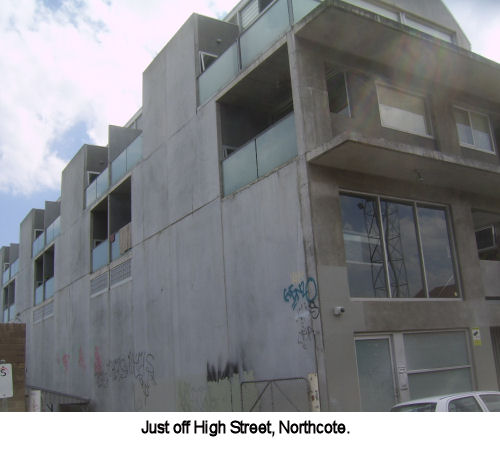 At first glance it appears that it would have a major impact, especially as the aim of the plan is to invest heavily in a wide range of projects including three new railway stations, schools in the Docklands, fifty new trams running on 100% renewable energy, a railway line to Doncaster and an upgrade of the train signalling system.
At first glance it appears that it would have a major impact, especially as the aim of the plan is to invest heavily in a wide range of projects including three new railway stations, schools in the Docklands, fifty new trams running on 100% renewable energy, a railway line to Doncaster and an upgrade of the train signalling system.
Of all of the aforementioned proposals, it would not be unreasonable to expect that the signalling upgrade would be one of the more affordable options on the table, yet the current state Labor government has already abandoned plans to enact this legislation, precisely because it is unable to find the funds.
So how are the Greens going to come up with the money for a range of considerably more ambitious proposals? Their answer is “through fixing the unfair tax system such as abolishing subsidies to the fossil fuel industry, making sure that the big banks pay their fair share and by ensuring that property developers contribute part of their profits to pay for community infrastructure.”
While this sounds reasonable, there is nevertheless no hope whatsoever of this policy framework becoming reality in time to prevent a much worse infrastructure crisis. The policies are so far removed from the current political paradigm (as supported by The Coalition and Labor) that to rely upon change in the short or even the medium term would be grossly unrealistic. We unfortunately do not have the luxury of buying that kind of time.
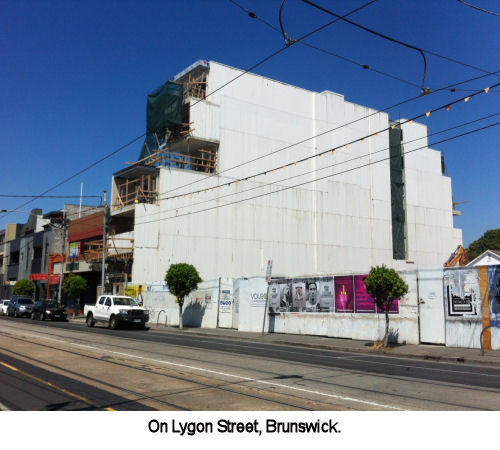
On top of a growing infrastructure debt, Melbourne will require an additional 355,000 new homes in the next decade alone, just to keep up with demand. The Greens advocate urban consolidation, whereby urban sprawl is replaced with higher density development, normally located within close proximity to established public transport. So far in Melbourne at least, this approach has turned out to be a major exercise in greenwash, mainly because the whole process is directed by free market economics resulting in a situation whereby very few high-density residential developments are even remotely affordable to people on lower incomes. Even fewer units are large enough to house families. A recent study by Bob Birrell and David McCloskey from The Australian Population Research Institute has highlighted the fact that ninety percent of new apartment approvals in Melbourne are no greater than sixty square metres in size, mainly because they are aimed at investors.
The Greens would like to substantially increase affordable housing while also ensuring that stronger design standards are put in place. This approach however is likely to meet massive resistance from powerful and influential development interests who would, as a result, be forced to take a significant cut in profits. The decision to also make developers contribute towards infrastructure projects would further entrench this opposition.
Therefore if we are to be serious about saving Melbourne's food bowl (which is now under severe attack from urban sprawl) as well as its diverse inner suburban neighbourhoods, we cannot afford to wait until the Greens become strong enough in number to substantially increase their political influence. Bad planning (as well as being a gross waste of resources) is almost impossible to reverse and poorly envisioned development is happening now at an accelerating pace.
The fact that this situation is being massively exacerbated by rapid population growth is another issue that cannot be ignored. Informing society that it is our environmental duty to live in high density developments is deceptive when in reality it is as much about forcing communities to adapt to a population policy aimed primarily at boosting GDP.
Our population is now increasing at such a rate that even if all of the Greens' policies were already in place, it would nevertheless be impossible to implement a workable and effective planning strategy that could keep up with this demand. This is because good planning needs to be well considered and should take into account much more than the housing needs of its residents. To take one example, the proposed Fisherman's Bend development has been on the drawing board for a long period, yet upon completion, it will absorb less than one year's worth of Melbourne's current rate of population growth.
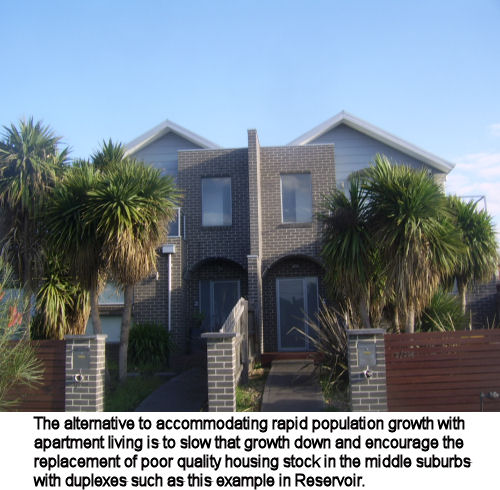
An alternative strategy (which is promoted by forward thinking planners such as Professor Michael Buxton) is to increase the density of middle suburbs such as Reservoir and Fawkner. They already contain a substantial amount of infrastructure and much of the post-war detached housing stock contained within them does not come anywhere close to the energy efficiency standards that would be required if they were built today. A substantial proportion of this stock could therefore be replaced with dual or triple occupancy developments complete with access to private open space. This would be in contrast to the higher density alternatives that are being championed in the inner suburbs, where space is much more of a premium.
The fact that the Greens have contested local elections on the premise of protecting the village culture of inner suburb areas such as Prahrarn and Westgarth shows that they too realise that there is a limit to the amount of high-density development that is desirable in their own heartlands. A slower rate of population growth is therefore required in order to limit ad-hoc and unsightly apartment blocks in the inner suburbs in favour of a slower, more graceful transition to town house living in the middle suburbs.
Another option is to put greater emphasis on developing regional towns but again population growth would need to be slowed until the appropriate infrastructure and policies are in place to make this happen. Otherwise, any policy relating to population that is not in tandem with infrastructure and affordable housing targets will greatly impact our ability to plan resilient communities. Persuading people to relocate from the metropolitan area would also be a long process because we are ultimately a nation of urban-conurbations, not boundless plains.
For example, forty percent of Australians live either in Melbourne or Sydney compared to only twenty percent of people who live in England's two main cities of London and Birmingham. Therefore our population growth (which translates to a new Sydney less than every 15 years) is far less evenly distributed than in many European countries which are served with a large network of established regional towns.
Some would argue that despite our current poor planning models, Australia nevertheless has an obligation to help ease the burden of heavily populated countries. This however becomes counterproductive if people are forced to increase their environmental footprint simply by virtue of moving here. It would be better to focus on protecting our threatened agricultural land from suburban sprawl for the purpose of exporting food to those countries that are most in need. Population policy should after all be primarily focused on doing the most good for people who need the most help.
The Greens would not lose any support (and would stand to gain a lot more) if they were to continue to advocate for a higher refugee intake whilst also initiating a wide ranging consultation process on population to include urban ecologists, planning experts and climate scientists as well as the general public. A major component of that process would be determining what infrastructure goals need to be reached (such as high speed rail) as a prerequisite to population targets being met.
In the meantime the full scale and urgency of Melbourne's housing and infrastructure crisis needs to be acknowledged and acted on accordingly. The 'Plan For A Better, More Liveable Melbourne' is not nearly enough to save Melbourne but it is not too late. We must act quickly to demand that population policy and infrastructure policy are in sync and that there is a full and open enquiry into Melbourne's planning strategy.
Mark Allen is an ex-town planner and environmental activist with a particular interest in population. He runs workshops on Population, Permaculture and Planning across Australia and runs a Facebook group of the same name. He can be contacted at [email protected]
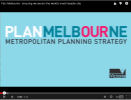 Plan Melbourne is the latest by the latest Victorian government to attempt to accommodate forced population growth. This article examines the economic propositions entailed in the plan. The fundamental failure of Plan Melbourne is that it is driven by a political imperative to maintain rapid population growth. Developers and some industry sectors will benefit, but to the detriment of the general public. ...Planning solutions, whether they be decentralisation, intra-urban dispersion, environmental pricing or other strategies face too many political and implementation difficulties to be successful. Reducing the rate of population growth, on the other hand, would make the planning tasks so much easier. Excessive growth requires massive infrastructure costs and borrowing requirements that will jeopardize Victoria’s AAA credit rating. Most AAA-rated countries have little population growth and modest infrastructure needs.
Plan Melbourne is the latest by the latest Victorian government to attempt to accommodate forced population growth. This article examines the economic propositions entailed in the plan. The fundamental failure of Plan Melbourne is that it is driven by a political imperative to maintain rapid population growth. Developers and some industry sectors will benefit, but to the detriment of the general public. ...Planning solutions, whether they be decentralisation, intra-urban dispersion, environmental pricing or other strategies face too many political and implementation difficulties to be successful. Reducing the rate of population growth, on the other hand, would make the planning tasks so much easier. Excessive growth requires massive infrastructure costs and borrowing requirements that will jeopardize Victoria’s AAA credit rating. Most AAA-rated countries have little population growth and modest infrastructure needs.
[Candobetter Editor:This video is from the Plan Melbourne page and gives an animated plan of what the government wants for Melbourne to 2050. There is no exit plan after that; it is as if population growth will magically stop in 2050. In fact, it is likely to be even faster then due to internal dynamics created by early engineering plus the larger base.]
My overall impression is that this plan will fail because it does not embrace some fundamental principles of urban economic development. My concerns are as follows.
Decentralisation: In 1965, leading urban economist the late Max Neutze, in his book Economic Policy and the Size of Cities, developed a theory of selective decentralization based on the observation that Australian urban centres were either too large or too small, and therefore population growth should be diverted away from the larger ones to smaller ones. But because of the prevalence of market imperfections in urban development, namely externalities, imperfect foresight and imperfect co-ordination, the free market could not do this without government assistance.
He tentatively suggested that the optimum size of a major city in terms of efficiency and liveability was between 200,000 and one million, and that decentralization policy should aim to push the new regional centres towards that level. But because only a few regional centres could reach such size, decentralization must be very selective, perhaps to only two or three centres in Victoria that are already large enough to provide their own momentum – e.g. Ballarat, Bendigo. Eventually they will become large enough for growth to become self-sustaining and for government assistance to be withdrawn.
Plan Melbourne fails here in two respects. Firstly, it accepts that Melbourne’s population will continue to grow and exceed optimum, with escalating adverse effects on efficiency and living standards. Secondly, it has too many growth centres, many of which are far too small to reach optimum size, even with permanent government assistance. Selection of unviable centres merely diverts resources away from more viable centres and reduces their chances of robust growth.
The multi-nodal alternative: In 1972, I adapted Neutze’s theory to the internal structure of cities, on the observation that most of the problems of overcrowding occur in or near the central business district, while centres in outer suburbs are too small to provide an adequate range of commercial, financial and recreational services. That is, commercial centres within cities were either too large or too small, and therefore an objective of planning should be to divert economic activity away from the CBD to a few outer suburban centres, which would be assisted to grow to a size which would eventually provide a range of activities similar to those offered in the CBD. Again the policy would be selective – perhaps for two or three carefully selected centres – and based on a similar understanding of market imperfections as identified by Neutze. In 1972 the multi-nodal (or polynuclear) concept had been an established principle in town planning and geography literature, but had not hitherto been developed in the economics literature.
Again, Plan Melbourne fails to embrace the selective principle, despite its underlying logic. Selection of too many centres ensures that none of them will succeed and that the city centre will continue to expand, as envisaged in the Plan.
Increased urban density: There is ample anecdotal evidence and formal research to suggest that increasing densities beyond optimum levels adds to inefficiency, reduced liveability and housing affordability problems. Pro-growth optimists constantly claim that problems of congestion and over-development can be solved by good planning and expansion of infrastructure, but do not acknowledge the time lags and huge costs this will entail. For example, the massive construction costs of underground tunnels, desalination plants and high-rise buildings are clear examples of agglomeration diseconomies resulting from over-development.
Furthermore, medium density housing, retail developments and major road projects frequently attract public opposition because of their impact on local amenity. Research that I have done reveals a negative correlation between income and density – that is, as people become wealthier they generally prefer to spread out to take advantage of the benefits of parks and gardens, peace and tranquility, car parking and open space.
Another disadvantage of increasing densities is that the population pressures causing them force up housing and rental costs, pushing low-income earners out of the property market and into a poverty trap.
Plan Melbourne fails badly here, and is certain to exacerbate the above problems.
Conclusion: The fundamental failure of Plan Melbourne is that it is driven by a political imperative to maintain rapid population growth. Developers and some industry sectors will benefit, but to the detriment of the general public. In the 40 years since I did my original research I have seen Melbourne gradually deteriorate, as traffic congestion worsens, commuting distances lengthen, environmental damage continues, water restrictions intensify, more people are priced out of the housing market, successive governments fail to keep up with infrastructure requirements, outer-urban agricultural land diminishes and public opposition to over-development increases.
Planning solutions, whether they be decentralisation, intra-urban dispersion, environmental pricing or other strategies face too many political and implementation difficulties to be successful. Reducing the rate of population growth, on the other hand, would make the planning tasks so much easier. Note also Tim Colebatch’s argument that excessive growth requires massive infrastructure costs and borrowing requirements that will jeopardize Victoria’s AAA credit rating, whereas “most AAA-rated countries have little population growth and modest infrastructure needs” (Melbourne Age, 15.10.2013).
Robert Braby

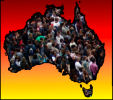 Groups representing thousands of Australians intend seeking meetings with Federal MPs to see where they stand on population growth and are calling for a referendum on the issues.
Groups representing thousands of Australians intend seeking meetings with Federal MPs to see where they stand on population growth and are calling for a referendum on the issues.
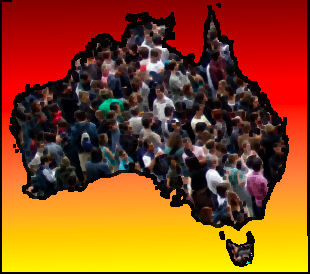 Peak environmental and planning groups in Victoria have cooperated to create a people’s Population Charter which says to the growth lobbyists “enough!”
Peak environmental and planning groups in Victoria have cooperated to create a people’s Population Charter which says to the growth lobbyists “enough!”
Protectors of Public Lands Victoria, Green Wedges Coalition, Planning Backlash, Environment East Gippsland, and the Vic/Tas branch of Sustainable Population Australia represent thousands of Victorians concerned that urban and rural amenity is being paved over as our urban open space, productive farmland and critical wildlife habitats are lost to more and more development.
The group intends to seek meetings with various Federal MPs to assess their support for action on population growth, and is also calling for a referendum to gauge the level of support for government to adopt a population policy which is responsive to the environmental carrying capacity of each region whilst also observing our international humanitarian obligations.
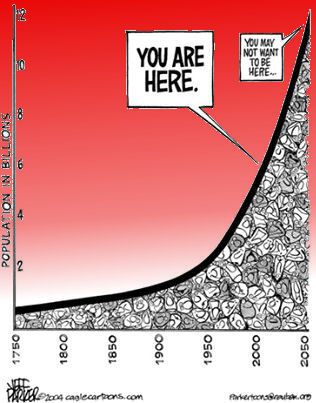
Acting Victorian president of Sustainable Population Australia and charter spokesperson Jenny Warfe says:
“Representative democracy is failing us. From Tecoma to Collingwood and Port Campbell to Gippsland, environmental and community groups are battling developer juggernauts, road and toll way builders. We are all having the same arguments over and over again with decision makers who don’t care what their constituents want, just what their developer mates want. And they want more of everything. It’s time to take back the decision making process about critical environmental and planning issues before unchecked population expansion rolls over all that is dear to us and critical for our future survival.”
It is fascinating to note that the bulk of the people leading and animating these groups are women, standing up to the male-dominated ideology of forced population growth in Australia.
 It is typical of the English speaking world that governments that pretend to be democratic, use planners to ride roughshod over the rights of citizens. Here is something from Los Angeles: "In the name of updating its zoning code, Los Angeles is on the verge of overriding community plans across the city by carving out "overlay" neighborhoods in which city employees can approve — by decree and without a hearing or Environmental Impact Report — residential and commercial projects of far greater density than now allowed."
It is typical of the English speaking world that governments that pretend to be democratic, use planners to ride roughshod over the rights of citizens. Here is something from Los Angeles: "In the name of updating its zoning code, Los Angeles is on the verge of overriding community plans across the city by carving out "overlay" neighborhoods in which city employees can approve — by decree and without a hearing or Environmental Impact Report — residential and commercial projects of far greater density than now allowed."

"Future Shock"
By L.A. Weekly
published: January 20, 2011
"Our website comment section lit up last week after Steven Leigh Morris — surely the Earth's only combo theater critic and growth-and-development specialist — wrote about the city's attempt to quietly push through a major planning change ("L.A.'s Church of Our Holy Density," Jan. 14). In the name of updating its zoning code, Los Angeles is on the verge of overriding community plans across the city by carving out "overlay" neighborhoods in which city employees can approve — by decree and without a hearing or Environmental Impact Report — residential and commercial projects of far greater density than now allowed. Commenters are of two minds. Some think opponents of the code revisions fail to recognize that Los Angeles will continue to grow and must prepare for higher density. Others see the revisions as a power grab by the city and developers that mostly cuts the public out of the process.
Reader Rick Abrams writes: "These zoning changes have one goal — to hasten the mega-densification of Los Angeles. Council President Eric Garcetti's and Councilman Tom LaBonge's New Hollywood Community Plan calls it Vertificalization. The Prop. X — Inventing the Next L.A., to which the article referred, called 'yards' a waste. They wanted apartments in people's backyards. They also proposed building Public Housing Projects over all the wide medians along various L.A. streets. They see this green space as waste."
More of this article here.

The Kangaroo Trail map (pictured left) is a bold initiative from the persistently performing Australian Wildlife Protection Council.
We read often in the mainstream news distressing stories about how kangaroos are too numerous and need to be culled. In fact the evidence for these statements, and for the cruel and bloody actions that follow them, is extremely poor. Definitions of how many is too many are circular. Kangaroo population statistics which ignore immigration and emigration are useless. Statistics which infer population numbers from rising road-kill without factoring in the spread of development which is driving more animals onto the roads in search of food and water should be exposed for the rubbish that they are, but are accepted instead without question.
Do Australians really want this kind of 'productivity' or the kind of leaders who encourage it?
Wildlife in general and kangaroos in particular get a really rotten deal in this country. Apart from the usual carnage promoted by our government at all levels, it seems that some businesses will stoop to any depth to make a dollar. Despite the invention of Viagra, the extinguishing of rhinos for their horns and tigers for their penises goes on. One of the most recent abjectly flogs ground up kangaroo testes in capsules at Australian Products Info, in NSW, and I quote:
"Essence of Kangaroo is made from Australian Red Kangaroo Testis. This large, powerful animal is the most magnificent of all the Kangaroos. It can leap up to 3.6m into the air and has a top speed of 65 km/hour. It alone illustrates the Kangaroos amazing strength and vitality. The research has found that male Kangaroo produces twice as much semen as a bull. The research has also proven that Essence of Kangaroo is extremely potent as it is rich in natural hormones, proteins, zinc and iron, which are able to increase physical strength and enhance the sexual energy. (...) Suggested Serving: Adults only. Take 1-2 capsules with meals per day or as directed by nutritionist."

So it is with relief and admiration for a group which punches a lot higher than its weight - the Australian Wildlife Protection Council (AWPC) that I am able to report on a magical new idea to improve the public, business and government perception of kangaroos.
It is the Kangaroo trail tourist map. This is a beautiful colour pamphlet with images of the fifty kangaroo species located in their regions on a map of Australia. Around the map is additional information about these animals and where to see them, how to see them.
The Kangaroo Trail Team produced the Kangaroo Tourist Brochures. Map and illustrations are by Australian artist, Neil Williams. Main photographers are Juri Lochman, Michael Williams, Bill Corn, Uli Kloeke. Text is written by the kangaroo trail team leader, Dr David Croft, from the University of New South Wales, who is passionate about kangaroos and whose career has been devoted to learning more about them and educating others.
AWPC President Maryland Wilson deserves our support for leading the way
Maryland Wilson, President of the AWPC, and Kangaroo Trail Team manager, brought the project into life and is promoting it. Wilson's extraordinary energy and dedication to the shining cause of getting Australians to defend the kangaroo's right to live in its own land and to be loved and appreciated as a complex, beautiful and social creature defies nearly every prevailing trend and shows the kind of courage that is necessary in standing up to institutional cruelty.
Recent comments